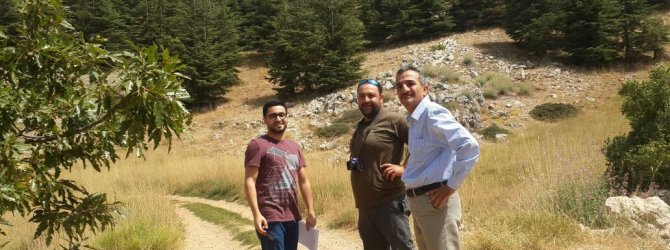-
WANA Research Fellow Kamal Kakish presents research at ...
WANA Research Fellow Kamal Kakish presents research at HIMA projects and natural reserves in Lebanon

In preparation for the upcoming publication of his research on the topic of Rangelands management practices in the West Asia-North Africa Region, last week Kamal Kakish travelled to Lebanon as part of the International Union for the Conservation of Nature delegation to present to the delegation and visit some of the sites on which his research is based.
Mr Kakish’s research has been centered on the topic of Rangelands and utilizing local communities for effective natural resource management as well as investigating a nexus between land tenure and local level accountability. Along with members of the IUCN, representatives also attended the trip from the Jordanian Ministries of State, Agriculture, Planning, and Environment, and the Prime Minister's Office, as well as members of the local municipalities and communities in Lebanon. The trip centered on visiting two communities in the Bekaa Valley of East Lebanon, Angar and Kefar Zebab, which operate according to the principals of HIMA, as well as Al- Shouf Cedar Reserve, a nature reserve in the Chouf District of Lebanon, and located on the slopes of the Barouk mountain, which comprises nearly 5% of the Lebanese territory.
HIMA, which is one of the major focus points of the WANA Green Economy team, means ”protected area” in Arabic. It originated more than 1500 years ago where it was spread along the Arab Peninsula as a tribal system of sustainable management of natural resources. It was applied as a system for organizing, maintaining, regulating and utilizing natural pasture and rangelands in a way fitting with ecosystems and local practices. It evolved when Islam came to the region, with Islamic values and rules being applied to the concept.
